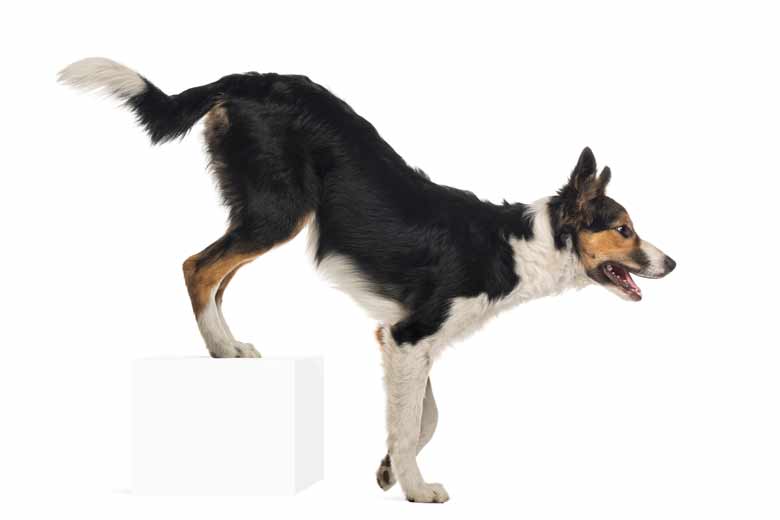
Hip dysplasia (HD) is the malformation and subsequent degeneration of the hip joint. There is laxity (or looseness) in the hips that results in abnormal wear and tear causing degeneration and pain in the joint. Hip dysplasia can occur in any size dog, but is much more likely to cause clinical signs in large breeds, and is most often seen in German Shepherds, Labradors, Golden Retrievers, Rottweilers and Saint Bernards.
Hip dysplasia is caused by a combination of genetics and environmental factors.
- 1. Genetics : Choosing a puppy whose parents have good hip scores reduces the likelihood of your pup suffering from HD. Hip scores are determined in breeding animals pre mating and involve radiological assessment of hips (x-rays), taken under general anaesthetic. The radiographs are sent to a specialist radiographer for assessment and scoring, to allow dogs and bitches with poor hips to be excluded from breeding. The complicated inheritance pattern can result in even these pets suffer some hip dysplasia, though usually to a milder degree, and over time susceptible breed clubs are able to reduce the number and severity of cases using this technique. This is also not helpful in a pet you already own.
- 2. Environmental factors : The environmental factor that most effects the development of hip dysplasia is rapid weight gain. In large breed pups we should therefore feed slightly less than the maximum they will eat, to reduce growth rate slightly below the maximum possible. For adult dogs we ensure they don’t become overweight. Other environmental factors include excessive exercise when young, and “doing the splits” on polished floors.
Signs are often seen in dogs as young as 5-10 months of age. They often exhibit difficulty rising, walking, running and climbing stairs due to pain in the hip joints. Your vet will often become suspicious of hip dysplasia if manipulation of the hip joint causes your dog pain in the consult. These dogs will also often have a stiff gait in the hind limbs.
Diagnosis of hip dysplasia requires your dog to have a general anaesthetic and hip x-rays. Hip x-rays are taken with the dog on their back, with their legs pulled out straight and turned inward. All dogs need a general anaesthetic to get this view, as even with the most obedient dog it is impossible to get the correct positioning with the dog awake. It is also a painful position. The hip is like a ball and socket joint and x-rays of dogs with hip dysplasia will show the ball sitting out of the socket. The degree of this will vary depending upon the severity of the condition. Being anaesthetised also allows us to feel for looseness in the hip, which further supports the diagnosis of HD. An awake dog braces and prevents a painful joint being felt properly.
A large number of dogs with hip dysplasia do not exhibit clinical signs and therefore do not require treatment. Management of HD can be medical or surgical. Treatment options are influenced by a number of factors including severity of clinical signs, age and size of dog, activity level, owner preferences, cost and whether referral to a specialist surgeon is needed.
- 1. Conservative treatment. Dogs with minimal pain can often receive conservative treatment. Exercise that does not place excessive force on the hips e.g. swimming is encouraged, rather than exercise that can further harm the hips like running . Overweight dogs are encouraged to lose weight to reduce strain on the hips. Anti-inflammatory drugs, which help ease the pain, or other drugs such as Cartrophen which penetrate the joint and reduce the ongoing destruction and thus the development of arthritis, are often used.
- 2. Surgical treatment. Dogs in substantial pain due to their hip dysplasia, can be treated surgically. The type of surgical procedure chosen for your dog is influenced by the factors mentioned above. Surgical procedures range from Total Hip Replacement – the “gold standard” which is performed by a specialist surgeon, to removing the “ball” part of the hip joint, the femoral head, which we can perform here at Mermaid Waters Veterinary Surgery.